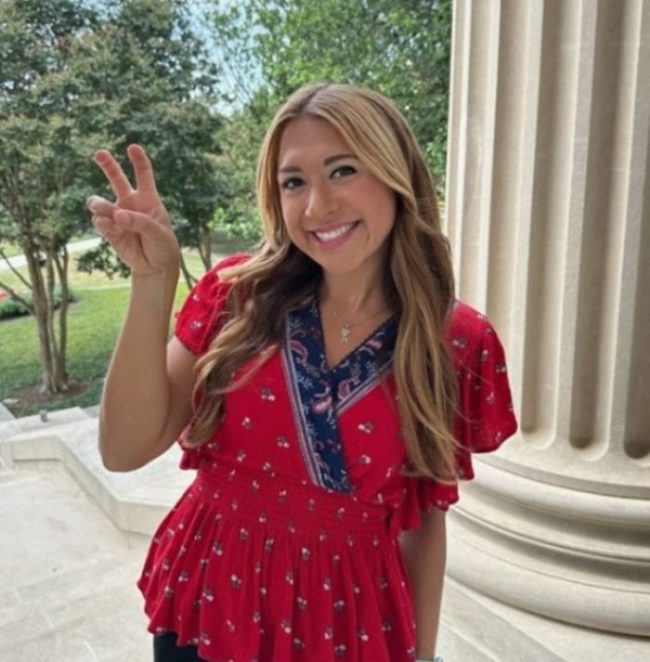Full-time SMU student Courtney Wittich lives near campus, has a car in her name, and pays her own bills. Although it is her parents’ money she uses to pay for things now, she understands the need to establish credit in her own name.
But the first time Wittich applied for a credit card, she was rejected.
“I guess I didn’t put enough money down for my income,” she said. “So I just sent in a new application with a bigger number.”
Wittich is not the only one to have ever exaggerated her income to receive approval for a credit card. For a college student, establishing credit can be a Catch-22: a good credit score is required to become eligible for a credit card, but a strong record of paying off debts is essential to building that good credit score. In the money-loaning world, no credit is actually worse than bad credit.
“You want to establish your credit as early as possible, because if it is unknown it is almost assumed to be bad,” said Alexandria Vaughn, a Financial Solutions Advisor for Merril Edge.
While the benefits of owning a credit card can be numerous, the chances of falling behind in payments can be treacherous, since credit can allow individuals to spend beyond their means. For young adults who still feel invincible, it is crucial to start good spending habits now.
A 2012 survey by CreditCards.com revealed that 27 percent of college students had a credit card in their own name. Of this group, however, 85 percent did not know their credit score at all. Credit card companies are working to help educate students and others new to the responsibility of managing money.
Bank of America recommends that parents of college students help them open an account before they head to college. This way the learning curve of paying a monthly bill occurs in a responsible household and provides a safety net.
“The worst time to learn is when you max out $6,000 worth of pizza for your roommates,” said Vaughn.
SMU students Ashley Corrigan and Catherine Huff both commented that their respective parents got them credit cards in their own names, but neither was certain how they came to be approved.
“My mom set it up and handed it to me,” said Corrigan.
For students handling this process alone, credit card companies are taking responsibility for educating young people on avoiding debt by managing finances.
Bank of America has paired with Khan Academy to establish a website called “Better Money Habits”. The site provides information, teaching financial skills from balancing a budget to understanding how credit scores are calculated.
Good credit can lead to lower rates on everything from a monthly electricity bill to the down payment on a home. Interest rates are often lower for those with a good credit report. According to Wells Fargo, a credit score is essentially a grade for an individual’s credit history. The three-digit number can range from 300-850, but a higher number represents a good credit score.
There are three main credit-reporting agencies: Equifax, Experian, and Transunion. Each company offers credit scores for free once per year. It is encouraged to check each, and compare the three numbers to make sure they are within the same range. Besides checking for any mistakes, this is a good way to protect against identity theft.
Thirty-five percent of a credit score is based on payment history. Thirty percent is debt-based, and the remaining factors are new and old credit history. Carrying a high credit balance will decrease the score.
A number of credit card companies have a ‘Secure Credit Card’, which is essentially a debit card that records credit. Typically this option requires monetary collateral in an amount between $100 and $500. If payments are made on time throughout the next year, the card is upgraded to a real credit card and the deposit returned.
Wells Fargo has a number of credit card options, but its Cash Back College Card helps establish credit while offering 3% cash back on college essentials such as gas, groceries and drugstore purchases. The card has no annual fees, and payments/rewards can easily be tracked online. Paying attention to features that come with each card is a good idea for students when researching options.
Often, students gain initial access to credit by having a parent cosign. However, this can negatively impact the cosigner’s credit score by around 10% for opening an additional card. Further, if the student fails to make payments on time it will be negatively reflected in the credit scores of both parties. To protect against this, a budget is essential.
“You really want to make sure that you aren’t over extending to where you have to use your credit each month and aren’t able to pay it off,“ said Vaughn.
She recommends using only 20% of your monthly budget towards credit charges, in order to avoid the trap that so many Americans fall into. A 2014 Consumer Financial Literacy survey by The National Foundation for Credit Card Counseling found that 34% of Americans carry month-to-month credit card debt. Fortunately, this statistic has been steadily decreasing since 2009 when 44% of adults fell into this category.
Responsible use of credit means not only paying every bill on time, but also avoiding consistently maxing out a credit limit. Credit card companies also like to see a variety of credit, as opposed to multiple credit cards. Other examples of credit can include bank loans, mortgages, etc. Simply owning multiple cards can be a red flag to companies, because this can come across as a way of expanding an individual’s purchasing power.
“Then it just looks like you’re over-spending as opposed to managing things,” said Vaughn.
So, while finances can seem scary and complicated for new adults, understanding the system and forming good habits from day one are critical.
“What’s most important, no matter what credit card you have, is that you charge a little each month and pay it off each month,” said Vaughn.
Most banks include free financial advising for customers and non-customers alike.
Amelia Hollow is a junior at SMU, majoring in Journalism and minoring in Arabic. For comments or questions, she can be reached by email at: [email protected].








